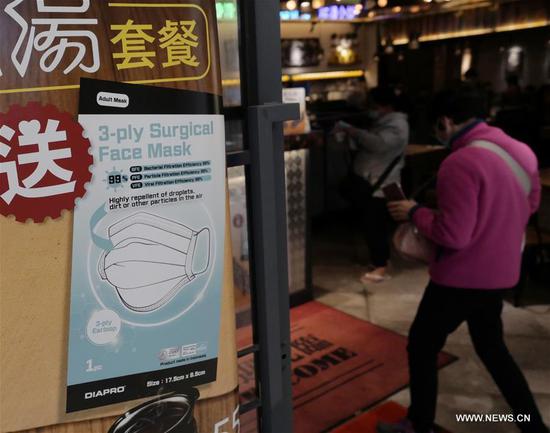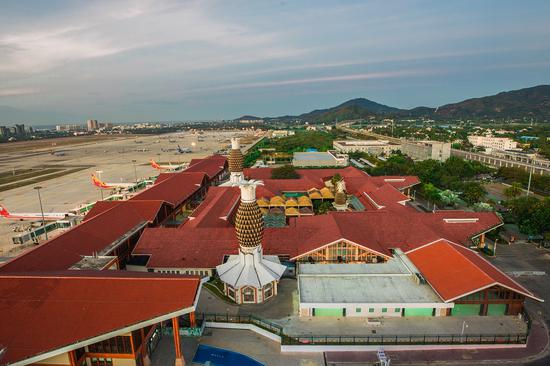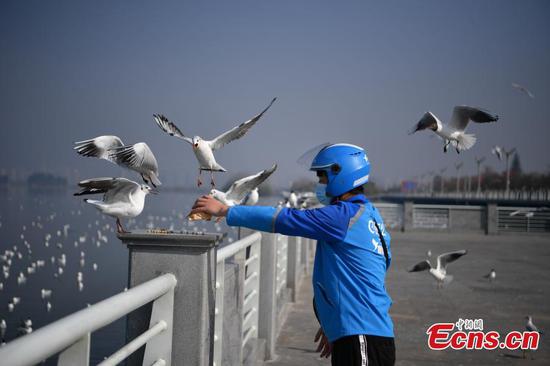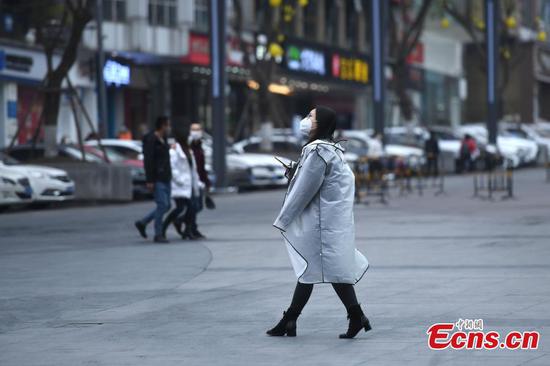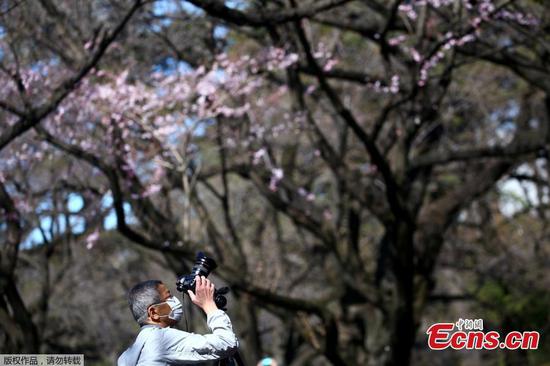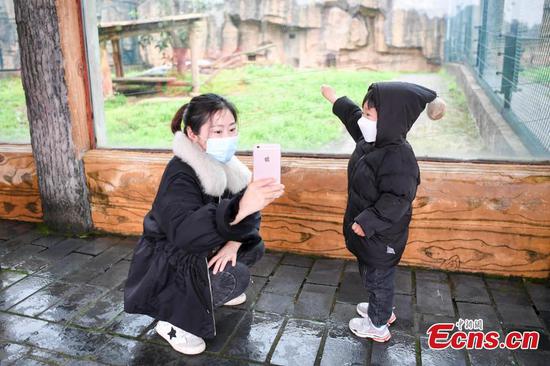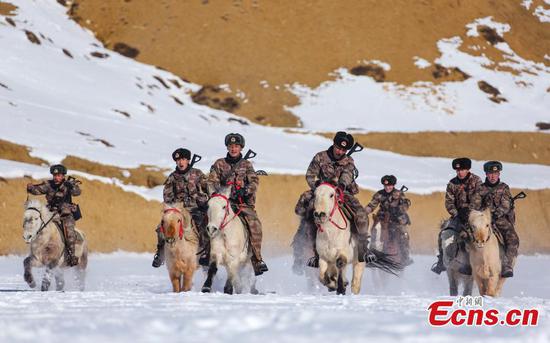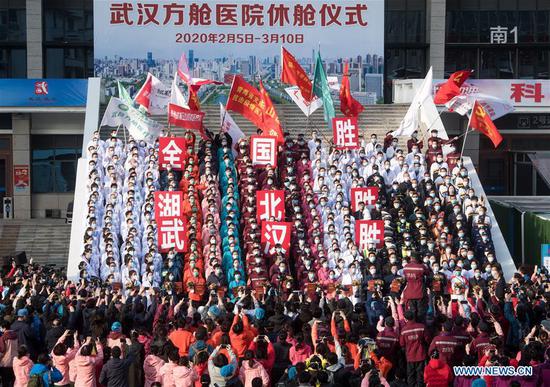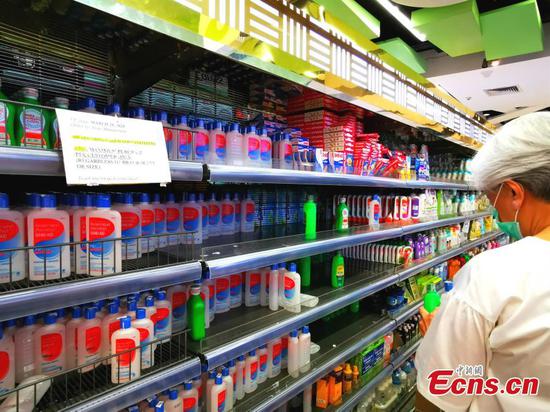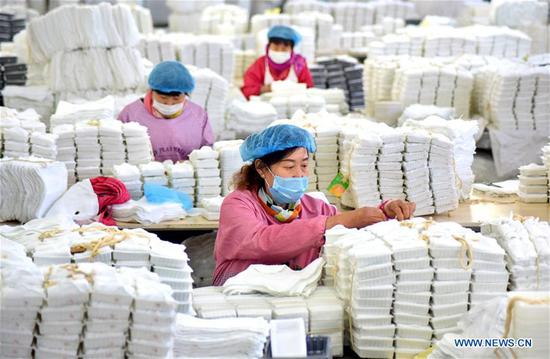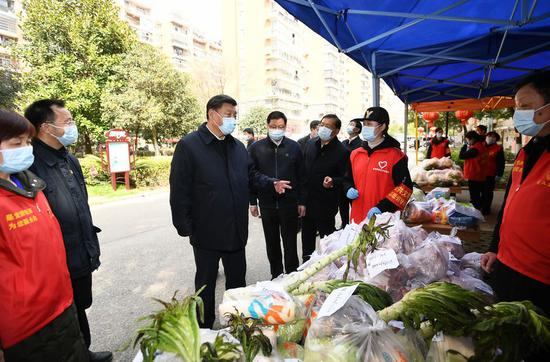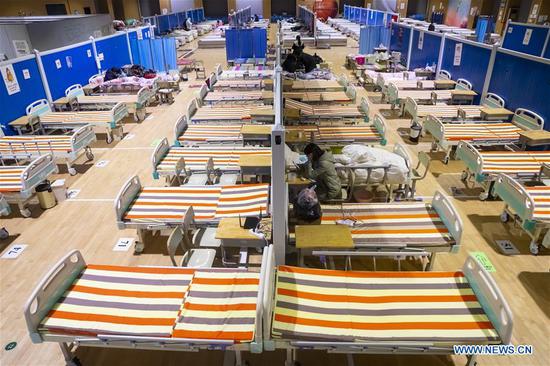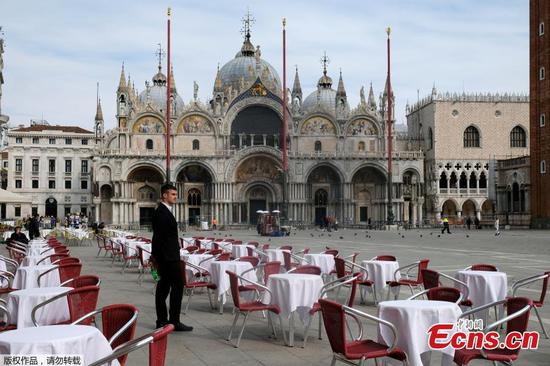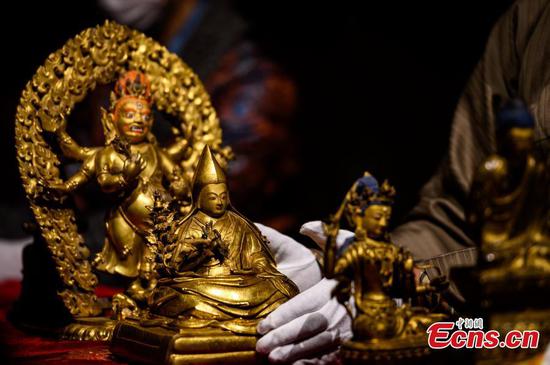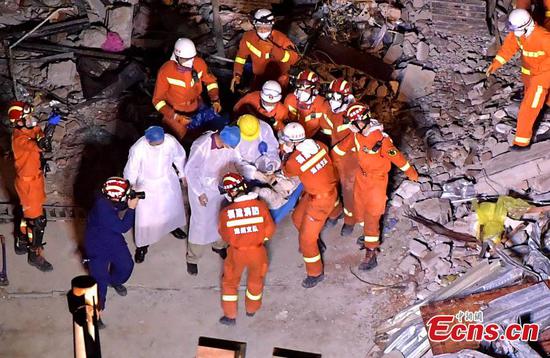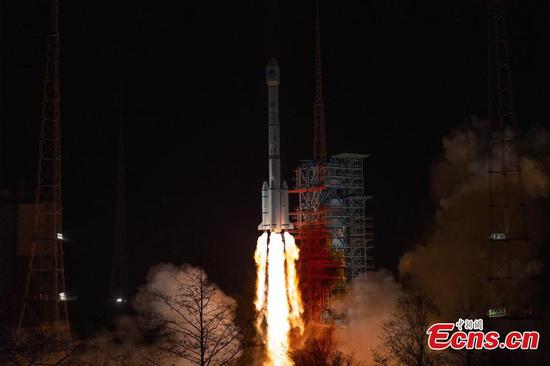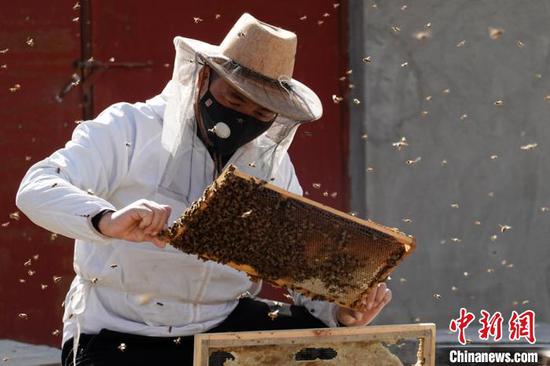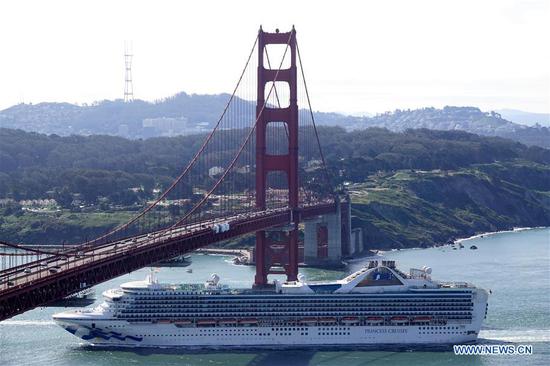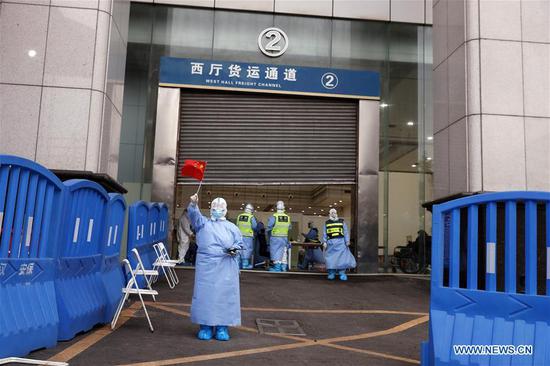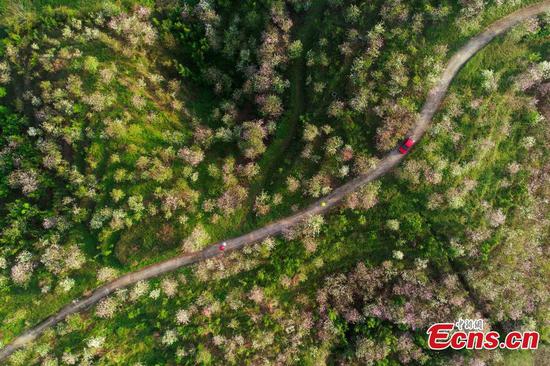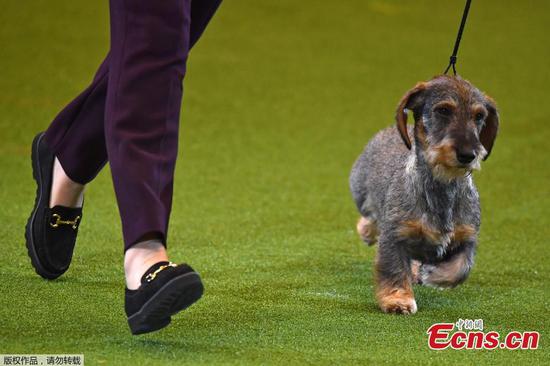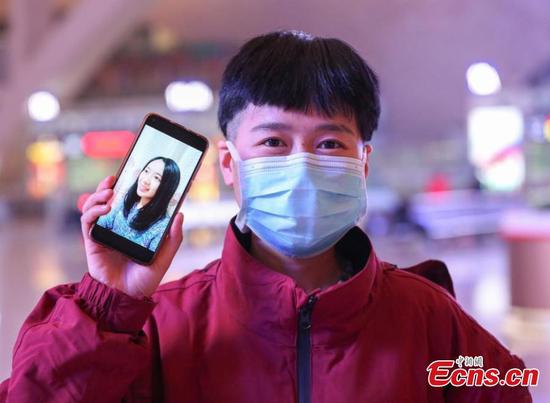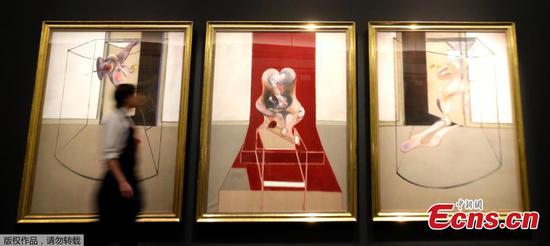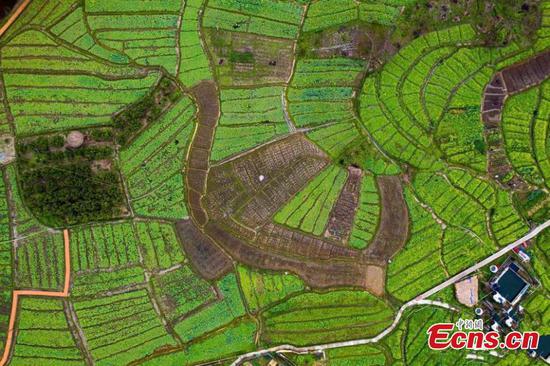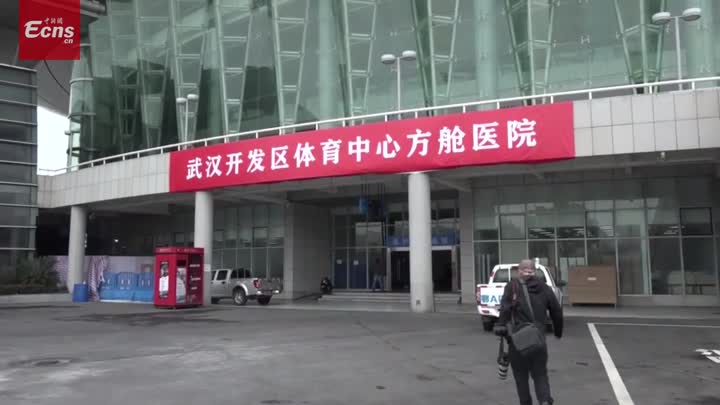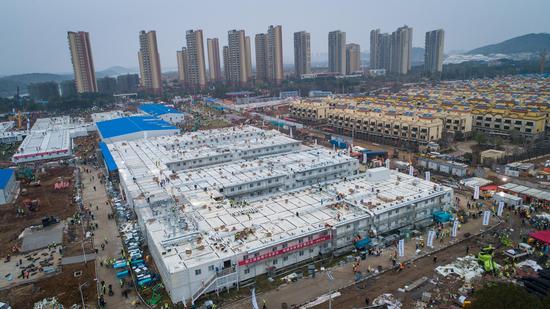
Aerial photo taken on Feb. 2, 2020 shows the Huoshenshan (Fire God Mountain) Hospital in Wuhan, central China's Hubei Province. (Xinhua/Cheng Min)
EARLY TREATMENT
Speed is everything. China's progress in curbing the epidemic has proved the approach of early detection, reporting, isolation and treatment the most primitive yet the most effective.
Xi has reiterated the importance of the approach. He urged more efforts to resolutely curb the spread of the epidemic, hospitalize all confirmed patients, conduct thorough tests of all suspected patients and isolate all those close contacts. He demanded to track and manage every potential risk without leaving any dead corners.
To leave no COVID-19 patient unattended and snap the spread of the illness, Wuhan built two hospitals, Huoshenshan and Leishenshan, in two weeks, as well as 16 temporary hospitals converted from sports stadiums and exhibition halls. The 16 temporary hospitals have been closed by Tuesday as patients were discharged.
The country also saw factories built in six days to replenish the supply of face masks, while auto and apparel makers adapted their production lines for medical supplies.
Chinese scientists and public health experts have been refining their response in tandem with the latest clinical discoveries at what a China-WHO joint mission team on COVID-19 called a "remarkable speed," which provided the vital evidence base for China's strategy, gaining precious time for the response.
COOPERATION WITH INT'L COMMUNITY
Xi noted that public health security is a common challenge to human beings as a whole, and all countries need to join hands to deal with it.
Amid its no-holds-barred domestic battle against the virus, China has actively and voluntarily cooperated with and shared information with the international community, buying time for a global response to the virus and offering help when needed.
Tedros commended China's quick moves in identifying and sequencing the novel coronavirus pathogen and sharing the sequence with the rest of the world, which has enabled the world to prepare for testing, diagnostics and other actions.
China has donated testing kits, masks, hazmat suits, thermometers and other supplies to countries including Iran, Iraq, Japan and the Republic of Korea, while doctors in Wuhan shared treatment experiences with their Italian counterparts in a teleconference.
To help fortify public health systems in developing countries, China announced a donation of 20 million U.S. dollars to the WHO in support of the global fight against COVID-19.
TARGETED, AGILE APPROACH
"When Wuhan wins, Hubei wins. When Hubei wins, China wins." In a pep talk to frontline medical staff in the epicenter of the outbreak in early February, Xi had clarified how the country would break the chains of transmission and resolutely win the people's war against the epidemic.
The priority given to Wuhan and Hubei reflects a fundamental strategy -- the country prioritized coordinated national response as well as local flexibility. Differentiated policies have been adopted for epidemic control and restoration of economic and social order in different places.
"In the face of a previously unknown virus, China has rolled out perhaps the most ambitious, agile and aggressive disease containment effort in history," according to a report by the China-WHO joint mission team which investigated COVID-19 in China last month.
The strategy that underpinned this containment effort was initially a national approach that promoted universal temperature monitoring, masking and hand washing. However, as the outbreak evolved and knowledge was gained, a science and risk-based approach was taken to tailor implementation. Specific containment measures were adjusted to the provincial, county and even community context, the capacity of the setting and the nature of novel coronavirus transmission there, the report said.
Hubei Province and the city of Wuhan are required to take more stringent, more targeted and more effective measures to curb the spread of the epidemic within their jurisdictions and beyond, and ensure the supply of all kinds of materials and necessities for the local people.
Local authorities also adopt the region-specific approach in terms of restoring the normal order of life and businesses, expanding business operations in light of local health risks.
In this two-front war -- combating the outbreak and bolstering economic and social development -- China tries to outmaneuver the difficulties with measures tailored to the local context. The recovery of China's economy has gained momentum thanks to the approach.









